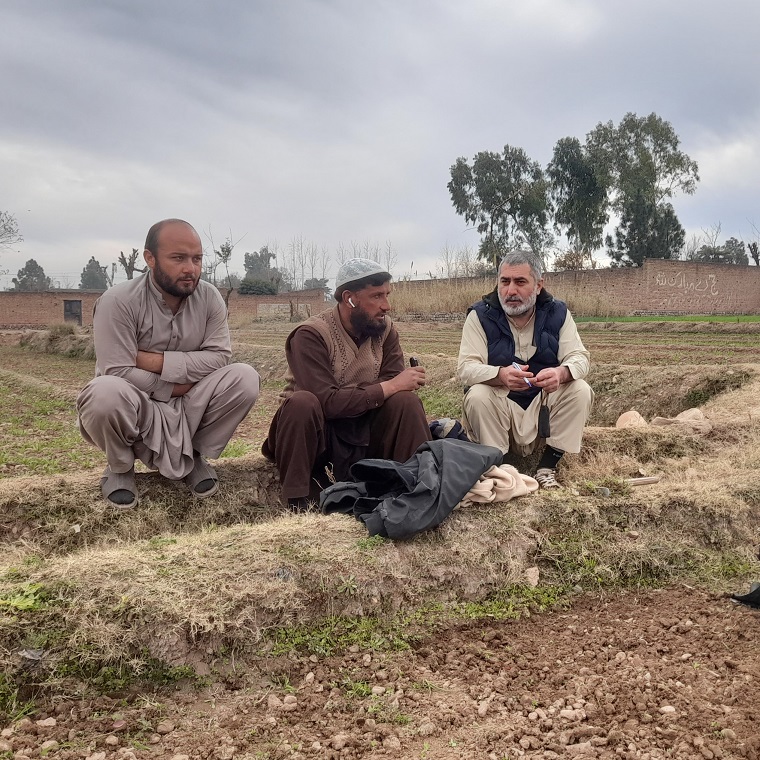Abdullah is a resident of the Akakhel area in the Khyber District. Initially, he took care of his family through farming. However, now he earns his livelihood through labour and hard work.
He owns twelve acres of land, but all of this land is now barren and unproductive. He said that until 15 years ago, this area yielded abundant crops, and the entire region was lush and prosperous.
"We used to fulfil our needs through the income from wheat, sugarcane, corn, fruits, and vegetables. We didn't even have to take loans for the next crop. Then something happened; the water in the rivers here started decreasing, and the lands became barren."
The land in the area, located fifteen kilometres away from Peshawar in Tehsil Bara, is flat and extremely fertile. However, the scarcity of river water has compelled the local farmers to work as labourers in the cities.
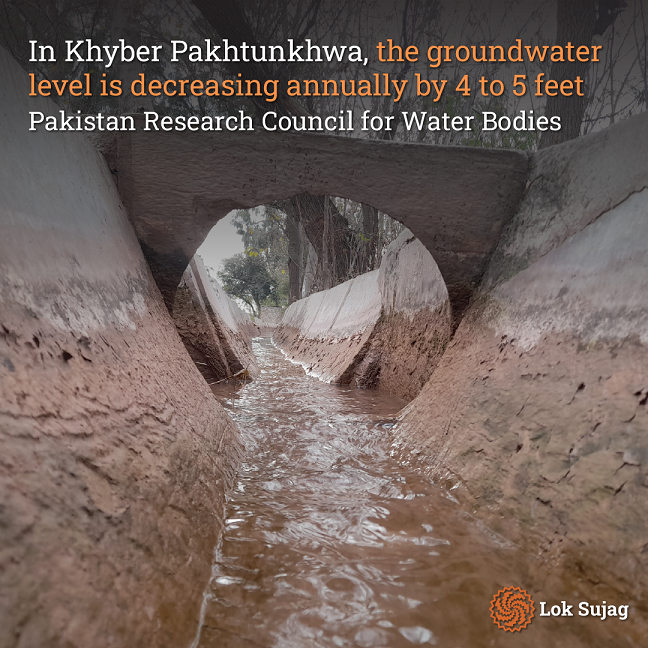
A dam was constructed on the Bara River, 14 kilometres west of Bara Bazaar in the Khyber District. This project began in 1965 and was completed in 1975. Two canals were diverted from this dam for irrigation, and water was released into them three years later.
Irrigation Engineer Haider Hayat says that the Bara River from the Terah Valley and the Mastura River from Urkuzai converge at the location of 'Spira.' The dam was constructed at this confluence, diverting and channelling water into the rivers. There is no reservoir or pond here to store water.
"If there is a large quantity of water in the river, farmers will have more water for irrigation. However, the water quantity will decrease if rainfall and snowfall are low."
According to the Water Department of Khyber District, two gates have been installed on the Spira Dam to control the water flow. With the help of these gates, 279 cusecs of water are diverted into the canal system through a tunnel, while 36 cusecs of water are allowed to flow into the Bara River.
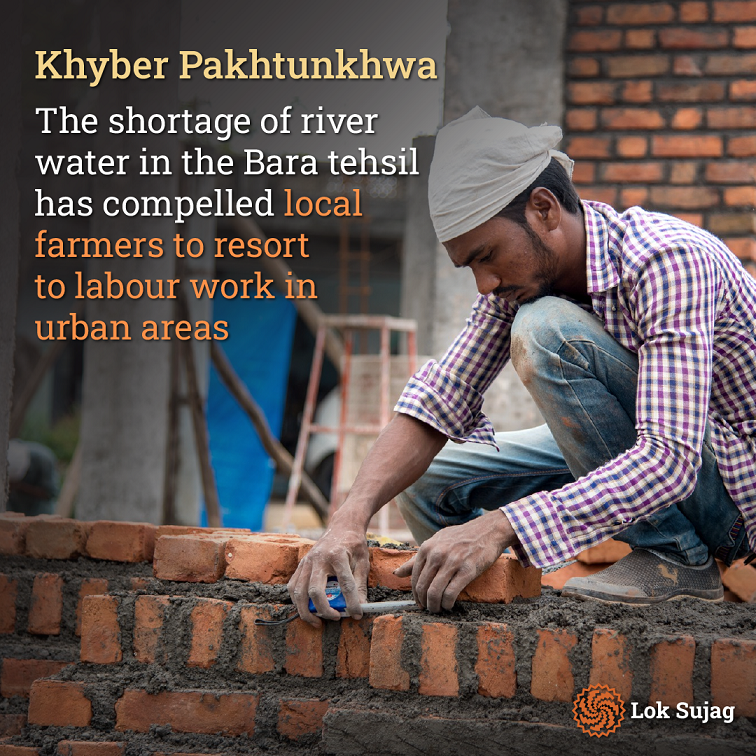
From the Spira Dam, 211 cusecs of water were allocated to the Right Bank Canal, which irrigates the areas of Akakhel, Sepah, and Shalobar. The Left Bank Canal received 68 cusecs of water, providing irrigation for crops in Malik Din Khel, Barqambarkhel, and Kuki Khel.
Both canals are connected to Tehsil Bara and Tehsil Jamrud, spanning 104 kilometres, with small and large canals.
Similarly, out of the released 36 cusecs of water into the Bara River, 16 cusecs are allocated for drinking purposes in the Sheikhhan area of Peshawar, 10 cusecs for Sangao, while ten cusecs are provided for the use of the Air Force.
According to the Water Department of Khyber, when the transmission of 278 cusecs of water through these canals began in 1978, it was used to irrigate 44 thousand acres of land. However, the water quantity gradually reduced over the years, and it is currently at 120 cusecs.
The government states that approximately 18 thousand acres of land are currently irrigated with this water. However, the local population does not agree with these figures.
Abdullah says that even less than 10 thousand acres of land is being irrigated.

Shalobar Qambar Khel's farmer, Ali Mat Khan, says he has cultivated only one acre out of his five-acre land to cultivate wheat and vegetables. Even for this acre, there is not enough water. Three years ago, he used to grow wheat up to 85 maunds per acre here.
He believes that, firstly, there is less water in the canal. Secondly, people have illegally constructed barriers in the canal at various places. Because of this, crops and large trees have dried up.
Gul Nazir Afridi is a social worker from Bara. He says that after the reduction in water in the canals, some landlords increased the size or constructed new illegal barriers. This has led to local disputes.
The Sub-Divisional Officer of Bara, Inhar Hyder Hyat, says that initially, four to five hundred cusecs of water were used to come from the Spira Dam. Now, there are only 150 cusecs, out of which 120 cusecs are provided for irrigation.
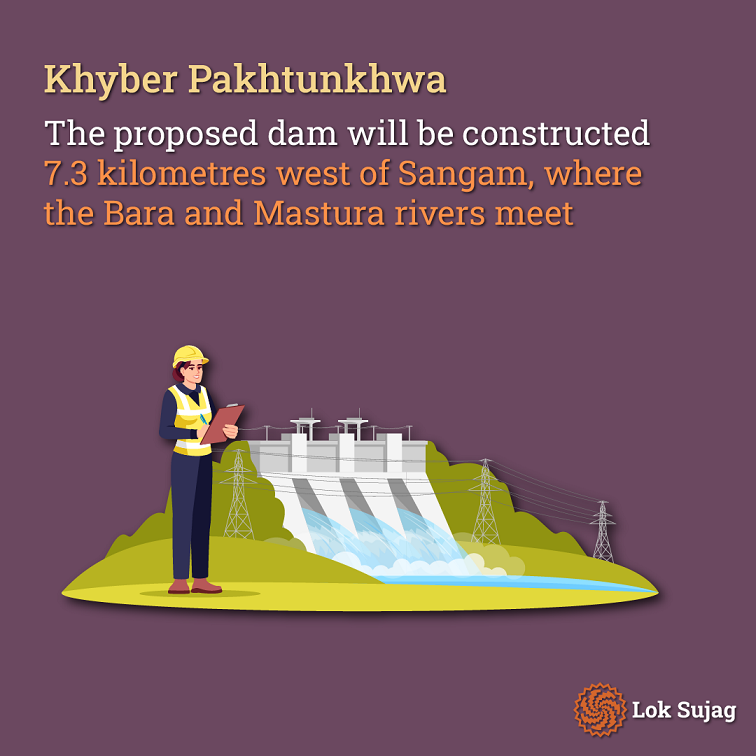
He confirms that the encroachments and tampering with legal channels exacerbate the difficulties faced by farmers. Although eight employees are appointed to address these complaints in the Bara canal system, an extensive canal network still poses challenges.
The groundwater level is further decreasing
Some time ago, the Standing Committee on Water Resources reported that the groundwater level has declined nationwide over the past ten years. This level was 74 feet below the danger threshold in Khyber District.
Dr Muneeb Khattak heads the Pakistan Council for Research on Water Resources in Khyber Pakhtunkhwa. He has revealed that the groundwater level here is declining annually by four to five feet.
He says that due to climatic changes, rainfall is reduced, and efforts to build reservoirs to conserve water are not progressing. Meanwhile, there is extravagant use of water in cities, factories, service stations, and farms. In Khyber, the current situation can be improved by constructing small and large dams on seasonal streams.
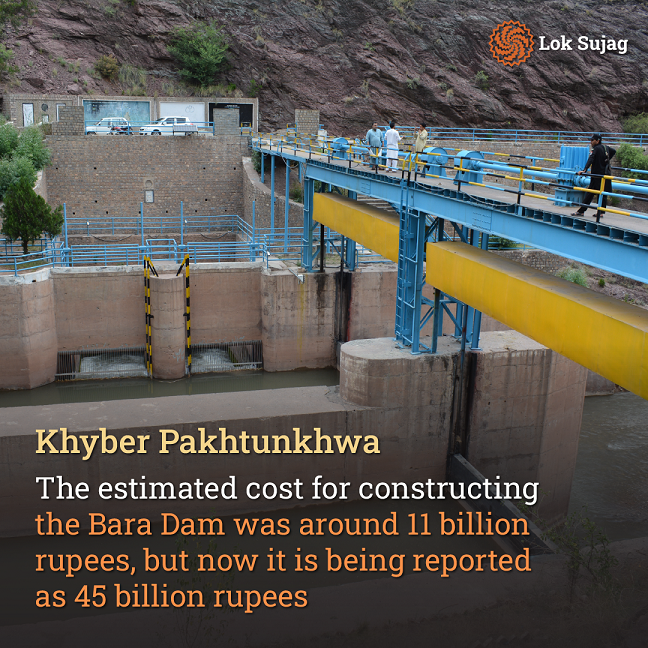
Zia-ul-Islam Dawar, Director of Agriculture Extension for Khyber, explains that Khyber District has a cultivated area of 24,518 hectares (60,585 acres), while 2,080 hectares of forests exist. Due to the scarcity of water, the agricultural productivity of the lands is decreasing.
He believes that the solution to all the issues in Khyber District lies in constructing the Bara Dam and developing small dams alongside it. These measures will not only make water available for agricultural lands but will also increase the cultivated area. Additionally, the problem of drinking water scarcity will also be resolved.
Small Dams is a subsidiary department of the Water Department of Khyber Pakhtunkhwa. According to official documents, after the inclusion of tribal areas, all matters related to approved dams, including Bara Dam, are referred to this department.
The department states that work is underway on the feasibility study of the Bara Dam. This study was conducted through NESPAK from 2006 to 2008 under the supervision of the Governor's Secretariat FATA.
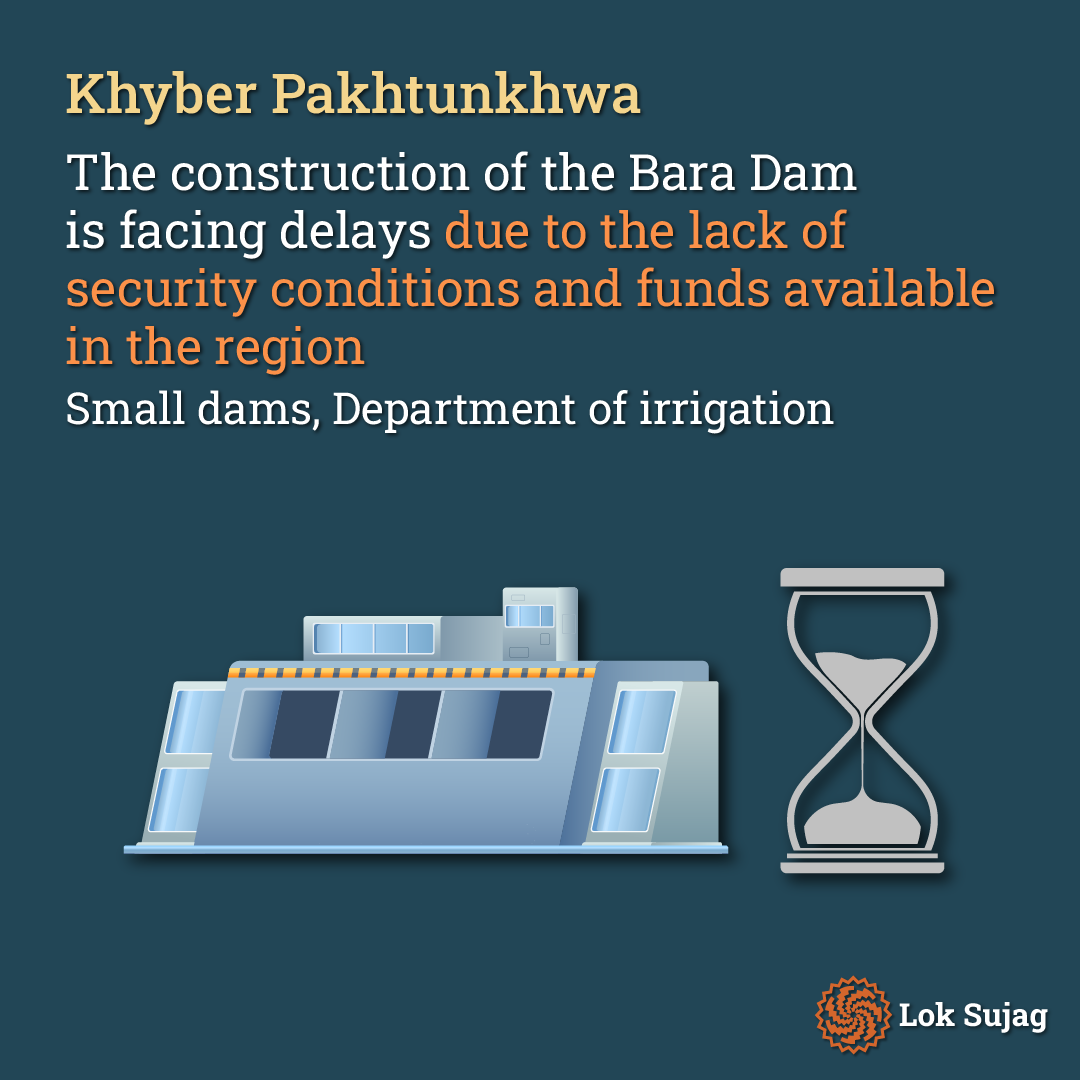
In the initial report, the estimated cost of the Bara Dam construction was around 11 billion rupees, but now it is being reported at 45 billion rupees. The provincial government has included this project in the Accelerated Implementation Program (AIP).
In a joint effort, the consulting engineers for the feasibility study and detailed engineering design initiated a survey on the project in March 2022. The team has compiled its assessment and discussion report and submitted it to the department.
According to the documents on small dams, the approved dam will be constructed 7.3 kilometres west of the Spira Dam on the confluence of the Bara and Mastura rivers. The dam will irrigate 42,000 acres of land, with 36,420 acres allocated to the Bara Canal system and 5,309 acres to the Civil irrigation system.
Also Read
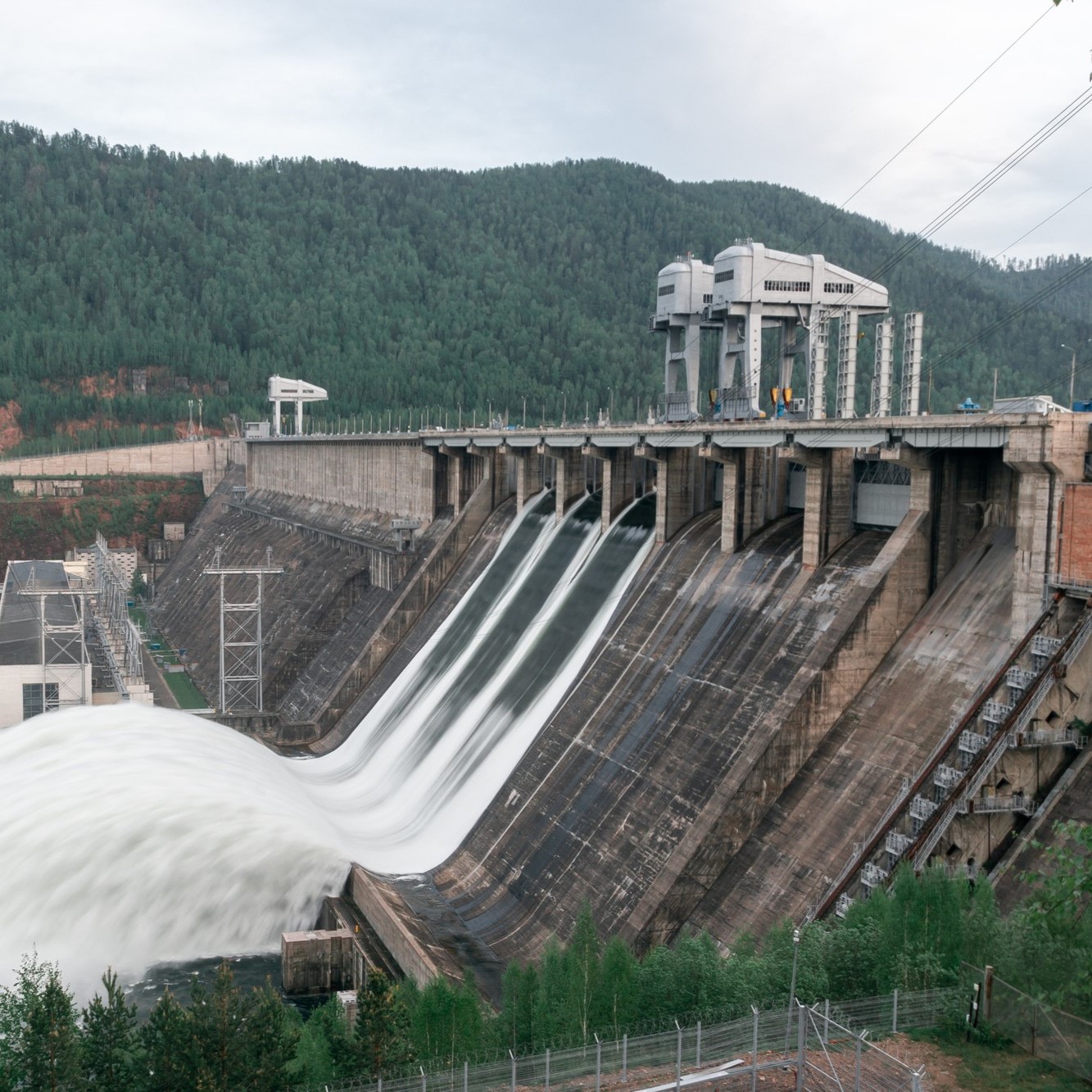
The broken promises of Kurram's Munda Dam: Barren fields, lost livelihoods, and an uncertain future
The report states that the proposed dam will have a height of 92 meters, and its water storage capacity will be 85,363 hectare-feet, out of which 62,434 hectare-feet will be utilised. According to the initial report, the dam is expected to generate six megawatts of electricity.
When Bara Dam will be constructed?
Under the Right to Information Act, in response to a query about the delay in the Bara Dam construction, Small Dams authorities stated that issues related to security conditions and the unavailability of funds in the region are causing the delay. However, efforts are being made by the provincial government to secure the necessary funds.
The construction of this project will impact the area by affecting a model school, a basic health centre, a three-kilometre road between Khyber and Orakzai, a graveyard, and some houses. However, according to the law, obtaining land will be part of the PC-1. This dam will prove beneficial in preventing floods and addressing groundwater issues.
Former member of the National Assembly Muhammad Iqbal Afridi from Khyber shares that both the federal Planning Department and provincial authorities have approved the construction of Bara Dam. The PTI government previously allocated 460 million rupees for the dam's design. Sheikh Muhammad Jalal has been appointed as the project director. However, there has been no visible progress from the provincial government.
After being elected, Iqbal Afridi initiated a fundraising campaign for the Bara Dam. He mentioned that sixteen lakh rupees had been collected. This amount was initially placed with a senior leader of the Pakistan Tehreek-e-Insaf (PTI). However, in response to public demands, this fund was later utilised to purchase edible items for the flood-affected people in Tirah and Noshera.
Published on 2 Dec 2023
